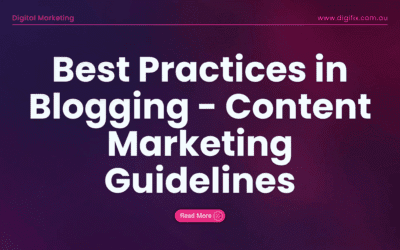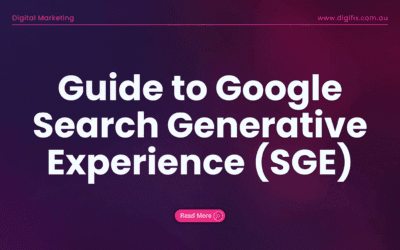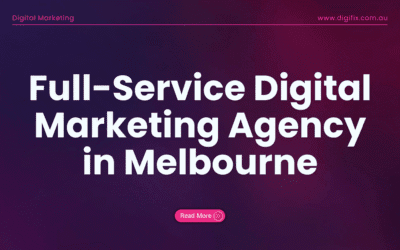Email Marketing still remains as an affordable & effective marketing tactic for many businesses. This blog post explains the essential email marketing terms you should know.
What is Email Marketing ?
Email Marketing is sending emails to promote your products or services. Almost all companies use email marketing tactics to inform new products, promotions, or news to their targeted email list.
The purposes of email marketing are to increase awareness, lead generation, build relationships or persuade customers to buy products.
You can use email marketing to let your customers know about you & integrate marketing automation.
If you like to know more about Email Marketing, you can read our blog article on The Ultimate Guide to Email Marketing.
A successful email marketing campaign starts with a good email marketing strategy. Email Marketing gives you many benefits as,
- Creating Customer interest with a low cost & low effort.
- Giving good exposure to the brand & its products.
- Affordable for anyone.
- Give a variety of business opportunities for the company.
You can use an email service provider to fine-tune your email marketing efforts.
There are many things you need to know about email marketing but this blog post focuses on the email marketing terms you should know.
You may think that email marketing is not relevant to the present world. Due to the rise of social media channels, people communicate through social media. But still, people use emails daily. So, you can promote your brand through email marketing.
When you do email marketing, you will encounter many email marketing terms. Some email marketing terms may be new & complex for you.
But you do not need to worry. This blog post explains the essential email marketing terms you must know.
Email Marketing Terms You Should Know:

1.A/B testing
In simple terms, A/B testing is trying two versions of an email to decide which one people like the most.
For example, let’s say you want to send a newsletter to your audience. You can send two newsletters for the same purpose but with different subject lines & images. You can send these two emails to two groups & see how they interact with the email.
Then, you can compare the results like opening rate & clicks to see which version had better results. A/B testing helps to enhance your emails & get more engagement.
- Acceptance rate
The percentage of emails accepted by the recipient’s email server & delivered to the inbox is known as the acceptance rate.
Here is how this works,
When you send an email to a person, it goes through the email server of that person before reaching the inbox. If the server accepts your email, it will move to your inbox. Then that email has a higher acceptance rate. But if the server marks your email as spam, it has a lower acceptance rate.
If you want to get a higher acceptance rate, you need to follow email marketing best practices.
Refer to below article,
Email Marketing best practices that will drive 100% results
- Attachment
An attachment is a file that you send with the email. It could be a document, video, or image. When you send an attachment, the recipient can view or download it.
But when you send marketing emails, it is better not to include attachments because those can contain malware or viruses.
- Auto follow-up
Auto follow-up is the process of automatically sending follow-up emails to those who haven’t responded to your emails.
Follow-up emails are reminders for the recipient to act or reply to your initial email.
- Auto-responder
An auto-responder is a tool that sends automatic emails to people based on their actions.
Autoresponders work based on triggers or actions, like subscribing, purchasing, or signing up. When these triggers are activated, the predetermined emails will be sent automatically. It will save time and ensure that customers receive the right information at the right time.
- Bounce rate
Bounce rate is the percentage of emails that were not delivered to recipients’ inboxes. When an email “bounces,” it is not delivered & instead bounces back to the sender.
Bounces can happen when the email address is invalid or does not exist, when the server rejects the email, or when the mailbox is full.
A higher bounce rate is a serious problem because people will not see your emails.
- Blacklist
A blacklist is a list of email addresses flagged or identified as spam. When an email address is on the blacklist, the emails sent by that address will be blocked or filtered by the spam filter.
If you want to avoid being on a blacklist, you have to have good email practices.
- Bulk list
A bulk list is a collection of email addresses collected for email marketing purposes. A bulk list helps to reach a large audience to promote products or services or give information.
For optimum results, you should keep a quality & updated bulk list.
- CAN-SPAM
CAN-SPAM stands for Controlling the Assault of Non-Solicited Pornography And Marketing Act. It is a law established by the US to monitor commercial email messages. The purpose of this law is to reduce unwanted or deceptive email spam sent to recipients.
10.Call-to-Action
A call to action can be a button or a hyperlink that helps people to take a specific action like clicking, filling out a form, signing up, downloading, or purchasing. These actions depend on the expected goals of the marketing campaign.
In email marketing, when you send emails, you can add a call to action as you prefer. For example, You can add a call to action in your marketing emails to lead people to a landing page where people can purchase products.
A good email campaign should have a main CTA & maybe one secondary CTA.
- Cost Per Thousand (CPM)
CPM is the cost for reaching 1000 names or email addresses in an email list. For example, if you spend $350 on an email list with 1000 email addresses, the cost per email address is $0.35. CPM helps marketers understand the cost efficiency of their email campaigns and compare pricing when acquiring email lists.
- Click-Through Rate (CTR)
CTR measures the percentage of email recipients who click on a specific URL or link within your emails. To calculate the CTR, you divide the number of link clicks by the total number of emails sent. A higher CTR indicates that your email campaign is engaging and successful in driving recipients to take action.
- Conversion Rate
Conversion rate represents the percentage of people who respond to a call to action (CTA) in your emails by performing a desired task, such as clicking on a link, filling out a form, downloading content, or making a purchase. A higher conversion rate indicates that your email campaign is effectively persuading recipients to take the desired action, leading to successful outcomes.
- Cold email
A cold email is an unsolicited email sent to someone you have no prior relationship with. The recipient of a cold email has not conveyed their permission to receive emails from that email address.
Companies send cold emails to introduce the brand, promote products, inform about special offers, or build relationships.
However, it’s essential to note that cold emailing should be done ethically.
- Double Opt-in
Double opt-in is a technique used in email marketing to verify & validate a subscriber’s intent to join an email list. With double opt-in, when someone signs up for a newsletter or subscribes to receive emails, they go through a two-step process.
First, the subscriber submits their email address through a sign-up form or opt-in mechanism. Then, they receive a confirmation email. This email has a verification link or a confirmation code that the subscriber needs to click or enter to confirm their subscription.
Double opt-in helps assure that the subscriber genuinely wants to receive emails and helps prevent unauthorized or accidental subscriptions.
- Dynamic content
Dynamic content is the personalized content within an email created based on the recipient’s interests, behaviors, location, demographic factors, past purchases, or other relevant things. Dynamic content helps to deliver a unique experience for every email recipient.
Dynamic content improves the user experience by delivering more personalized and engaging content. It increases the engagement rate, boosts sales & improves customer satisfaction.
An email is a digital message sent electronically from one person to another using an email service or platform. It is a popular form of communication that helps people and businesses to exchange messages, documents, & other information quickly & efficiently.
Emails consist of a sender’s email address, a recipient’s email address, a subject line showing the topic of the message, the main body, & additional attachments.
- Email campaign
A set of emails sent with the purpose of reaching marketing goals is known as an email campaign. The emails you send should have an eye-catching subject line, well-focused content & clear call to action.
To start an email campaign, you should create an email list with potential customers or existing customers. Then define the goals you hope to achieve with the email campaign.
Then you have to do email list segmentation & plan how you personalize your emails. Then start to write quality marketing emails. Then send those emails with a proper subject line to motivate people to open your emails.
- Email newsletter
An email newsletter is a regularly distributed digital publication sent via emails to subscribers who have given consent to receive updates from a specific individual, organization, or business.
It is a communication tool that delivers useful and relevant information to subscribers regularly.
Email newsletters contain much content like news, blog posts, product information, promotions, or event invitations.
- Email phishing
Email phishing is a malicious action where scammers or cybercriminals try to mislead people by sending fraudulent emails that seem to be from a legitimate source, such as a reputable company, financial institution, or government agency. The intention behind email phishing is to deceive recipients into disclosing sensitive information, such as passwords, credit card details, or personal identification.
It is essential to report any suspected phishing attempts to appropriate authorities to prevent further harm and raise awareness about potential threats.
- Email Service Provider
An email service provider (ESP) is a platform that offers email marketing services to people, businesses, or organizations. ESPs supply the infrastructure and tools required for sending and managing large-scale email campaigns efficiently.
Email service providers offer a range of features and services, like email campaign creation, contact list management, email template design, scheduling and automation, personalization, analytics, and reporting, & deliverability optimization. They also supply resources & support to help users comply with email marketing rules, keep a good sender reputation, & achieve higher deliverability rates.
- Engagement
Engagement is the level of interaction & response that recipients have with your email campaigns. It calculates how involved and interested your subscribers are in your content.
Email engagement can be various metrics, including open rates, click-through rates (CTR), conversion rates, and overall subscriber activity.
- False positives
False positives refer to legitimate emails that are mistakenly recognized as spam or junk by spam filters or email security systems. It happens when an email that should have reached the recipient’s inbox is incorrectly flagged and redirected to the spam folder.
False positives have negative outcomes for email marketers as their well-crafted and essential emails go unnoticed by recipients.
24.Hard bounce
A hard bounce is failing to deliver an email due to permanent reasons like invalid email, blocked email addresses, or non-existent.
25.Soft bounce
Soft Bounce is failing to deliver an email for temporary reasons like an unavailable server or full mailbox.
26.List segmentation
Sending your marketing emails to everyone will not give you benefits. Instead, you should only select a target audience or group of people to send your emails. This process is called list segmentation. A segmented email list is more relevant & profitable.
27.Single Opt-In
In Single Opt-In, People sign-up for email notifications but do not confirm the action. People can use other people’s email addresses to sign-up for an email campaign without their knowledge. This method is not a recommended method for building an email list.
This method can lead to less engaged email recipients because they haven’t confirmed to receive emails from you. So, I recommend you use the double-opt In.
28.Opt-in
Opt-in is the permission given by people to receive emails from a sender or organization. It is a voluntary action where recipients willingly subscribe or sign up to receive emails and provide their email addresses.
When individuals opt in, they show interest in receiving information, updates, promotions, or other content from the sender. Opt-in practices are essential for maintaining good email marketing ethics and compliance with anti-spam regulations.
29.White list
A list of email addresses a person considers to be a genuine one. The higher the number of people that include you in the whitelist, the higher will be your domain reputation.
30.Personalization
Personalization means including elements that add more value to each person through your emails. It can be addressing each recipient by their name, thanking them for previous purchases, recommending products based on their preferences, or any unique content.
31.Opt-out
This is also known as unsubscribing. Opt-out of an email list means you no longer desire to receive emails from the company whose email list you earlier subscribed to. It is a must to give subscribers a way to opt out of every email you send.
32.Sender score
The sender score shows the overall sending reputation of your IP address. This score is shown on a scale from 1-100. If your sender score is high, your emails are more likely to be delivered to the recipients.
- Honey Pot
An email address that also acts as a spam trap. A honey pot is an email address on a plain site of a website & it can be harvested by a spam bot.
- Spammer
A spammer is an individual or organization that sends unrequested and often unwanted email messages in large volumes. Spammers send emails to a wide range of recipients without their permission, promoting products and services with commercial intent.
Spammers acquire email addresses using illegal or unethical ways, such as scraping websites, purchasing email lists without proper consent, or using software to generate random email addresses.
35.Subscriber
A subscriber is an individual who voluntarily provides their email address and grants permission to receive emails from a particular sender or organization. Subscribers are individuals who have opted in to receive emails & have expressed an interest in receiving updates, information, promotions, or other content from the sender.
Conclusion
When you hear the term Email Marketing, you think, “Is email marketing still effective?” If you still have that question, my answer is YES!
Email Marketing is still a useful marketing tactic, which proved amazing results in many industries. You should have a good email marketing strategy to get the maximum outcome from email marketing. There are many email marketing terms you should know for your email marketing campaign.
In this blog article, I have explained a few essential email marketing terms for you to get an idea. All of these email marketing terms will be useful when you plan your next email marketing campaign.
If you need any assistance for Digital Marketing related services, our team at DigiFix is more than happy to help you. Visit our website to contact us! We help many businesses to reach their next level with Digital Marketing.
Do you want more traffic?
—————
Hi, we are an Australian digital agency doing groundbreaking work to help a business like yours reach its full potential. My only question is will you qualify for our services?
Do you want more traffic?
—————
Hi, we are an Australian digital agency doing groundbreaking work to help a business like yours reach its full potential. My only question is will you qualify for our services?





0 Comments